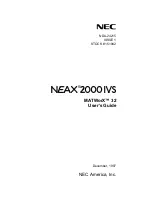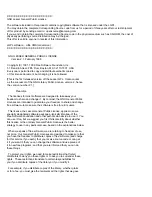
DDL Language Elements
Data Definition Language (DDL) Reference Manual — 426798-002
2- 10
Dictionary Comments
A comment can precede a field or group description within a DEFINITION or RECORD
statement; for example:
DEFINITION custinfo.
* This field contains a unique customer identifier:
02 custnum PIC 9(4).
* This group contains the customer name in sequence:
02 custname.
04 last-name PIC X(12).
04 first-name PIC X(8).
04 initial PIC X(2).
END
Storing Comments in the Dictionary
DDL stores user-defined dictionary comments in the dictionary only if the dictionary is
open and comments are specifically requested by a COMMENTS command. DDL
stores any comments that follow a COMMENTS command in the open dictionary. A
NOCOMMENTS command causes DDL to stop storing comments in the dictionary.
Storing Comments in Source Files
If dictionary comments are stored in the dictionary, DDL automatically reproduces
these comments in any open C, COBOL, DDL, FORTRAN, Pascal, TACL, or TAL
source file. You can suppress the writing of dictionary comments to any of these open
source files by entering the NOCLISTOUT command. You can resume reproducing
comments with a CLISTOUT command.
Putting Comments in the Compiler Listing
DDL puts all user-defined dictionary comments in its compiler listing by default,
whether or not the dictionary is open and whether or not you specify a COMMENTS
command. You can suppress the listing of dictionary comments by issuing the
NOCLISTIN command, and you can resume listing dictionary comments by issuing a
CLISTIN command.
Dictionary Comments Generated by DDL
DDL generates dictionary comments that report the date and time the source schema
was first compiled and the date and time each definition and record is compiled. These
timestamp comments are always added to the dictionary. They are also added to any
open source files unless suppressed with the NOTIMESTAMP command. A
TIMESTAMP command causes DDL to add subsequent timestamp comments to any
open source files.
















































